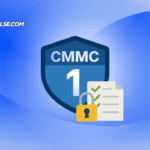Investors often overlook middle-market assets. This may be because it is difficult to define and company data is not readily available or because the focus tends to be on VC/startups, real estate, or bond opportunities.
Middle-market companies typically have room to grow operationally and in scale compared with their larger peers. This often includes making add-on acquisitions that are accretive to the overall portfolio.
Definition
There is no one universal definition of middle market assets. In general, however, the term is applied to companies with revenue between $5 million and $1 billion. This includes private and family-owned businesses, partnerships, and sole proprietorships. These companies are a significant economic force, accounting for about one-third of private sector GDP.
While the segment may be underpenetrated by PE firms, there is strong interest among GPs and LPs alike. Since the financial crisis, middle-market funds have outperformed their large-cap counterparts.
While many of the same challenges exist in the middle-market space, such as access to data and valuation, some unique factors make this asset class a desirable investment opportunity. Those include opportunities for value creation through buy-and-build strategies, fragmented markets, and lower entry multiples compared to large-cap companies. Also, unlike enterprise and small-business market segments, middle-market companies are more resilient to economic downturns.
Valuation Methods
Middle-market valuation methods are similar to those of more prominent investors like Caliber in higher-value industries. However, the differences in size and scope of these businesses often lead to significant variations in valuations.
For example, a PE firm may use valuation techniques such as discounted cash flow, discounted payback period, and discounted net present value. However, it is unrealistic to expect absolute certainty in valuations, as they are colored by assumptions and influenced by the economy, business conditions, and individual company characteristics.
As a result, PE firms are increasingly interested in middle-market opportunities. Despite their relatively smaller size, they offer high growth potential and lower risk than large-cap companies. Recent data shows that PE funds focused on the middle market have outperformed their large-cap counterparts. Additionally, a large amount of family wealth is passed on from baby boomers to their children, suggesting that the number of middle market opportunities will continue to grow.
Tax Considerations
When evaluating the value of middle-market assets, advisors use various tools.
Some analysts use other metrics, such as physical assets and employee size, to define middle-market companies. There is no one universal standard.
Regardless of the metric, middle-market companies tend to have less risk than large-cap stocks and more growth potential than small-cap stocks. Investors often seek out this type of stock, particularly if it has above-average dividend yields.
Private equity firms have focused on the lower middle market to meet the fund demand. This has created opportunities for businesses that need help accessing conventional commercial bank loans. Moreover, business owners can utilize sound planning to dramatically alter their tax basis when selling a lower middle-market company, avoiding the need for capital gains taxes altogether.
Exit Strategies
The choice of an exit strategy depends on the business owner’s objectives. These can include a desire to cut their stake and sell for a profit or simply a goal of retiring and re-entering the workforce in another capacity.
Leveraged buyouts are one of the most common strategies for middle-market assets. These private equity investments typically involve acquiring and financing a company with borrowed funds (loans or bonds). A leveraged buyout often consists in taking on significant debt, so companies with stable cash flow are usually the best candidates.
Many middle-market businesses seek financing from business development companies (BDCs). These closed-end investment funds provide debt capital to firms focusing on the middle market. These lenders may also offer more flexible terms than commercial banks, which tend to restrict lending practices. This can be a more suitable alternative to selling their company for some. However, success with this strategy depends on the firm’s structure, such as a flat organizational hierarchy and financial transparency that encourages employee buy-in.












